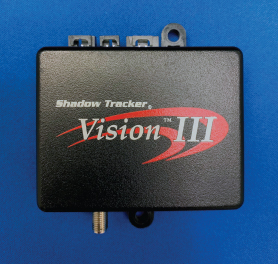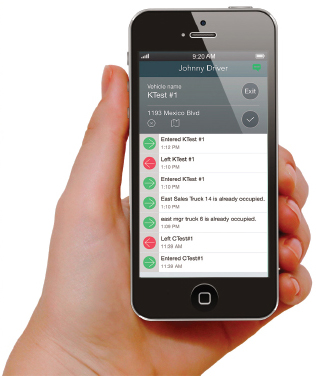The pandemic has caused and continues to cause various effects on each business. Businesses were forced to close for a few weeks, furlough employees, or shut their doors entirely. Others saw an uptick in contracts, are experiencing labor shortages, and possibly have even profited from the pandemic’s effects. For businesses that relate to those in the first example, they could be on the cusp of facing two of the challenges listed ahead.
2 CHALLENGES, 1 SOLUTION
Challenge: After contractors with work truck fleets in industries like construction, landscaping, HVAC, telecom, and public works tightened their belts during the pandemic, they now have a new problem: How will they handle demand as the crisis passes?
Solution: To meet accumulated demand, contractors are using GPS work truck fleet tracking to increase efficiency and driver accountability.
Challenge: Home and business owners deferred maintenance and remodeling to their properties as the pandemic and national economy worsened. This left unresolved issues ranging from HVAC, electrical, plumbing, cleaning, flooring, and roofing to the full gamut of contractor trades.
Now with the pandemic ebbing and the economy rebounding, contractors with light-, medium-, and heavy-duty work truck fleets are starting to get a flood of non-emergency service calls for customers who can no longer delay.
However, contractors who may have already cut service staff during the lean times of the pandemic are now having trouble keeping pace with the increase in business.
Solution: Fortunately, contractors as well as work truck professionals and managers who seek to maximize the productivity of their existing staff to meet rising demand and boost profits now have an advanced tool at their disposal that can cost-effectively facilitate this aim. By using innovative technology such as a real-time GPS vehicle tracking system via a smartphone, tablet, or PC along with text, email, and voice directly to the driver, they can dynamically manage their fleets and work crews to optimize dispatch and routing while minimizing downtime.
This approach not only reduces the cost of employee overtime, but also Class 1-8 work truck operation including fuel use, wear and tear, maintenance, and premature replacement.

DOING MORE WITH LESS
“Work truck professionals and managers have to be more efficient than ever today, and real-time GPS vehicle tracking can help,” says Ben VanAvery, director of sales and marketing at Advanced Tracking Technologies (ATTI), a Houston, Texas-based designer and manufacturer of GPS tracking products. “With it you can see which technicians you have across the area, including who is nearest and who is experienced and properly qualified for the job. And by accessing real-time traffic data in the software, you can identify who is easiest to send to that location as well.”
According to VanAvery, once a job is complete, it is recorded in the system so the dispatcher, owner, or fleet manager can stay apprised of who is available for the next job. In this way, it can serve as a remote time sheet, which reduces the record keeping burden and promotes productivity.
For example, one GPS vehicle tracking device, the Vision™ from ATTI, transmits 10-second updates, showing precisely where vehicles are the moment the fleet manager or dispatcher needs to know.
Compared with typical GPS tracking devices that may only update every few minutes, the system provides real-time location updates as well as speed and idle time alerts if something is amiss. This data is transmitted via satellite and cellular networks to a smartphone or PC on a 24/7 basis. The system has access to nationwide speed limits in its database.
Since this approach enables contractors to quickly route the nearest available vehicle and work crew to any required service call, it helps to minimize employee overtime as well as vehicle fuel use, maintenance, and eventual replacement costs.
USING THE DEVICE
With GPS tracking, work truck professionals and managers, contractors, or dispatchers can display the real-time location of the entire fleet on a map and zoom in on any specific vehicle via an app or PC. At a glance, the manager can see if a vehicle is moving or stopped. If they touch a vehicle icon, the app will display where the vehicle has been, where it stopped, and how long it has idled.
By zooming in or out on the map, managers can see every fleet vehicles’ location and quickly reallocate one to where it is needed.
As post pandemic demand for maintenance, repair, remodeling, and construction services continues to rise for contractors and work truck professionals, real-time GPS vehicle tracking systems can also help drivers and work crews take more responsibility for their productivity. To instill greater self-monitoring and efficiency, contractors and fleet managers can configure the system to automatically send real-time text or email alerts to individual drivers, groups, or the entire fleet if factors such as traffic congestion, travel route, vehicle speed, starts, stops, or idling pose a concern or deviate from policy.
Further, emailed vehicle tracking reports can be configured to automatically summarize fleet performance of such factors on periodic basis. For instance, because the GPS system is automated, travel reports can be generated that analyze vital historical data—such as on-time jobsite arrivals, departures, and time on the job—and sent via email without the need to open software.
The reports can be customized to include as much detail as needed, such as how many stops, how long per location, top speed, mileage, idle times of the day, etc. Identifying and implementing more efficient routing and performance enables individual drivers and the fleet to accomplish more in less time.

FOR THE DRIVER
Such a system can also help individual drivers drive more safely and take greater responsibility for their conduct without the need to micromanage. Contractors and fleet managers can set and inform their drivers of a maximum vehicle speed of no more than 8 mph over the posted limit, for example. The system will then track their vehicle speed and compare this with the speed limit in its national data base, with exceptions automatically emailed to the driver and contractor in a report, if desired.
Implementing real-time GPS tracking can also increase driver accountability by making them less inclined to take unauthorized excursions, such as for personal errands, when not on a job because the system documents actual routes and stops. This can help to further minimize unnecessary vehicle mileage, fuel use, and wear and tear.
Of course, GPS tracking can also be used to recognize and reward consistently rapid employee response, which encourages greater productivity.
As contractors and work truck pros struggle to meet pent up demand resulting from the pandemic’s long economic slowdown, the bottom line is that today’s advanced GPS tracking systems can help to profitably meet that demand by optimizing vehicle use and work crew productivity.
ABOUT THE AUTHOR
Del Williams is a technical writer based in Torrance, California. Find out more, visit www.advantrack.com.




